Note: * Estimate
Source: Measuring the Information Society Repot, ITU 2015
Target 2.2.A: In the developing world, 50 per cent of individuals should be using the Internet by 2020 /
Target 2.2.B: In the least developed countries (LDCs), 20 per cent of individuals should be using the Internet by 2020
Percentage of individuals using the Internet in developing countries | Percentage of individuals using the Internet in LDCs |
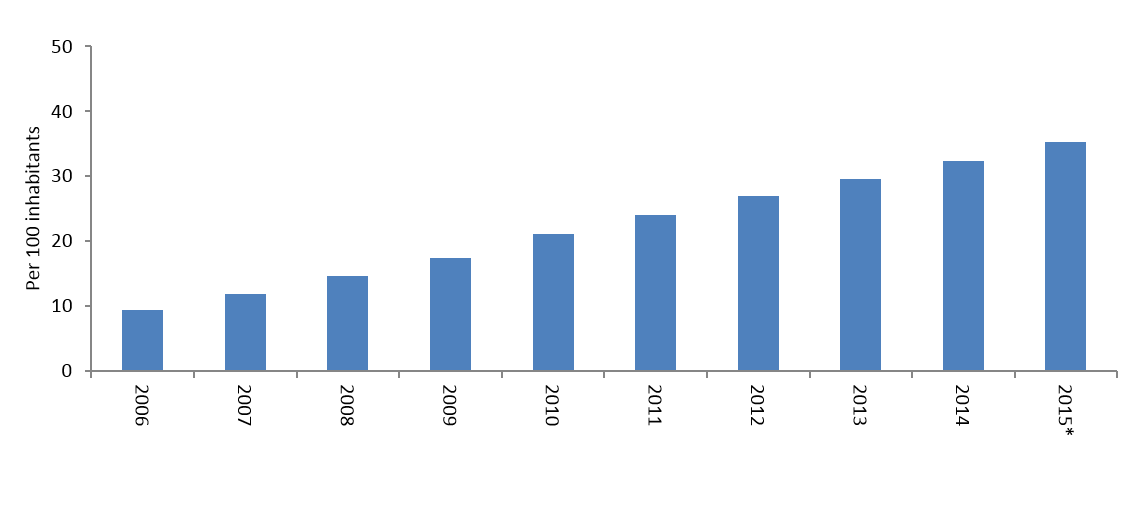 | 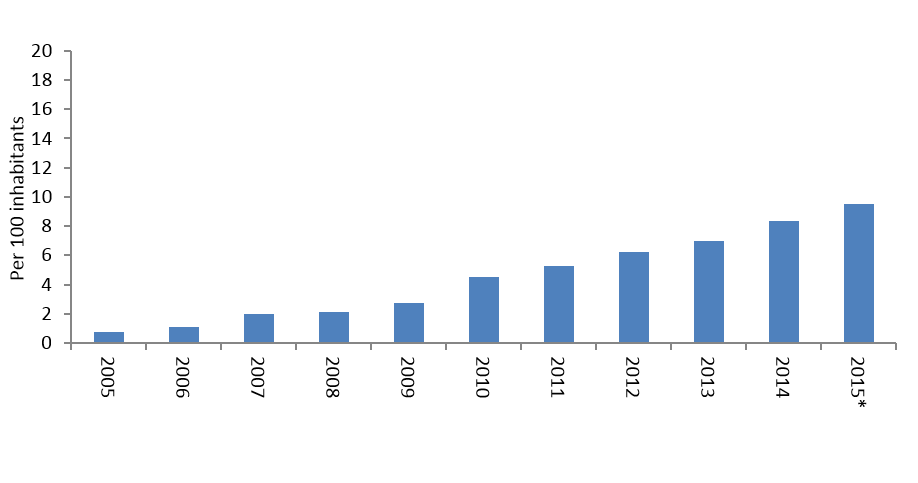 |
Note: * Estimate
Source: Measuring the Information Society Report, ITU 2015
The Combined Annual Growth Rate (CAGR) for household Internet access in developing countries, for the period 2005-2015, was 15.4 per cent between 2005 and 2015, and 15.7 per cent in the five years from 2010 to 2015. By the end of 2015, an estimated 34.1% of households in the developing world had access to the Internet.
The CAGR for household Internet access in LDCs was 33.9 per cent between 2005 and 2015, and 25.6 per cent in the five years between 2010 and 2015, much higher than for developing countries in general. Despite the high growth rates, LDCs are starting from a much lower baseline and therefore the progress in absolute terms is smaller – with an estimated 6.7% of LDC households having access to the Internet at the end of 2015.
The CAGR in Internet usage in developing countries for the period 2005-2015 was 16.4 per cent for developing countries, with an estimated 35.3% of the population in developing countries being online at the end of 2015. For LDCs, the CAGR in Internet usage was 28.4 per cent between 2005 and 2015, with an estimated 9.5% of the population in LDCs being online at the end of 2015.
Target 2.3.A: The affordability gap between developed and developing countries should be reduced by 40 per cent by 2020
The IPB and sub-baskets, by development level, 2008-2014
IPB | Fixed Broadband |
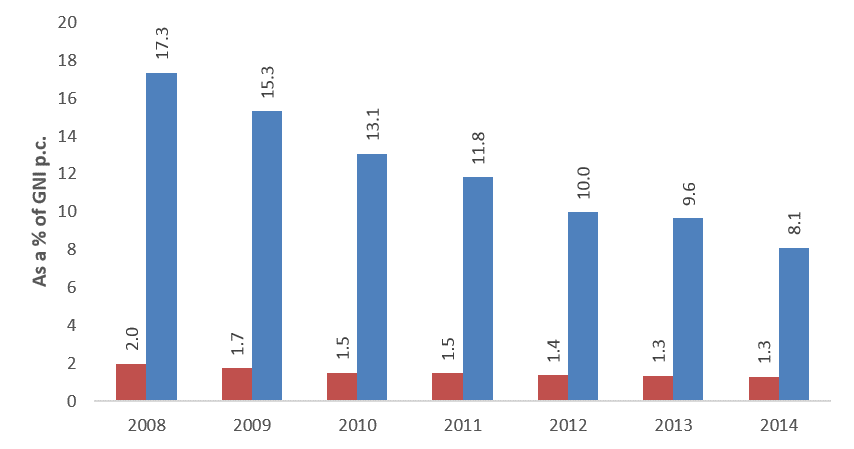 | 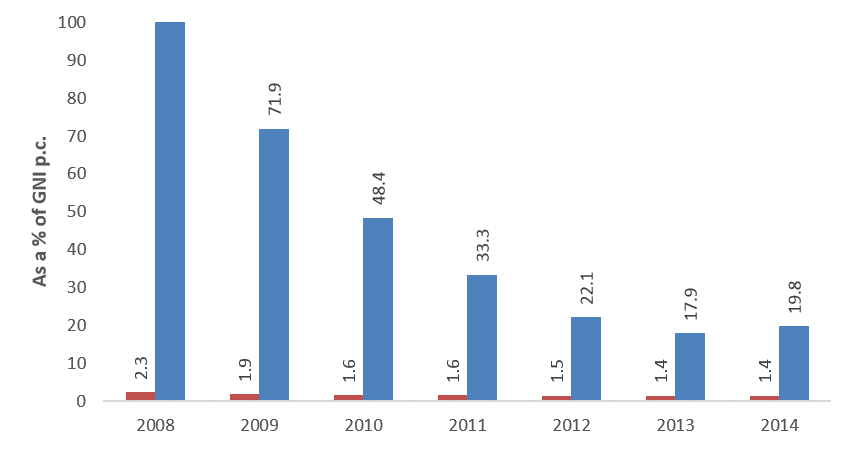 |
Fixed Telephone | Mobile Broadband |
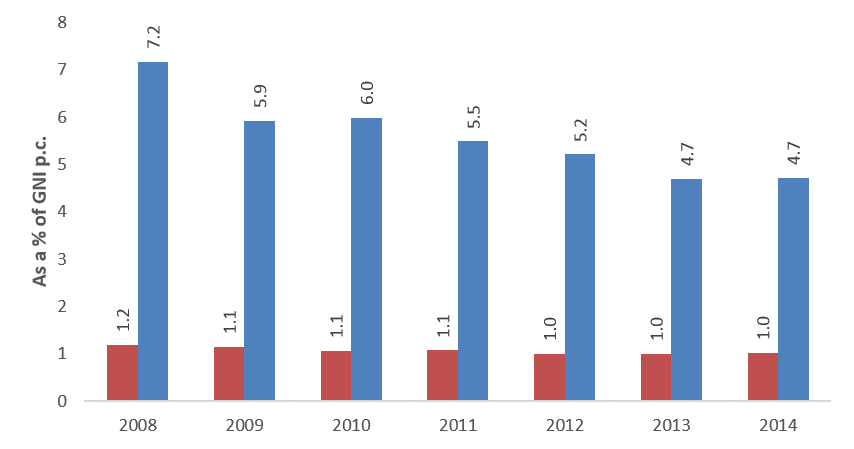 |
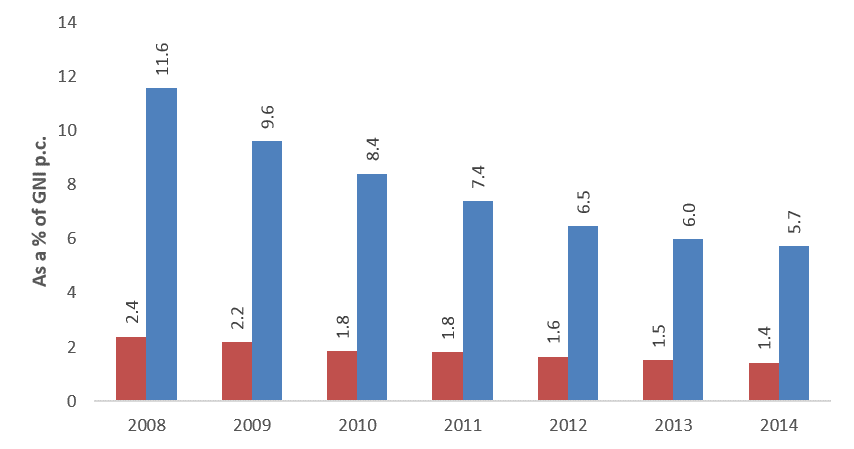
|
 |
Source: Measuring the Information Society Report, ITU 2015
The difference in the affordability of fixed and mobile-cellular services between developed and developing countries fell steadily and significantly during the period 2008-2012, followed by a slowdown in the period 2012-2014, and even an increase in the case of fixed broadband in 2014. On the other hand, the difference in the affordability of mobile broadband between developed and developing countries narrowed from 2013 to 2014.
Target 2.3.B: Broadband services should cost no more than 5 % of average monthly income in developing countries by 2020
Country performance against the broadband affordability target, 2014
Source: Measuring the Information Society Report, ITU 2015
By early 2015, a total of 111 economies (out of 160 for which data were available) had achieved the target of broadband services costing no more than 5 per cent of average monthly income, including all developed countries and 67 developing economies. 102 of the 111 economies had achieved the target for fixed-broadband prices and 105 for mobile-broadband prices. Altogether, 49 developing countries for which data were available need to achieve further reductions in broadband prices in order to achieve the target, together, it should be assumed, with a number of other countries for which no data were available.
Target 2.4: Worldwide, 90 per cent of the rural population should be covered by broadband services by 2020
Population coverage by 3G networks, urban and rural areas, 2015*
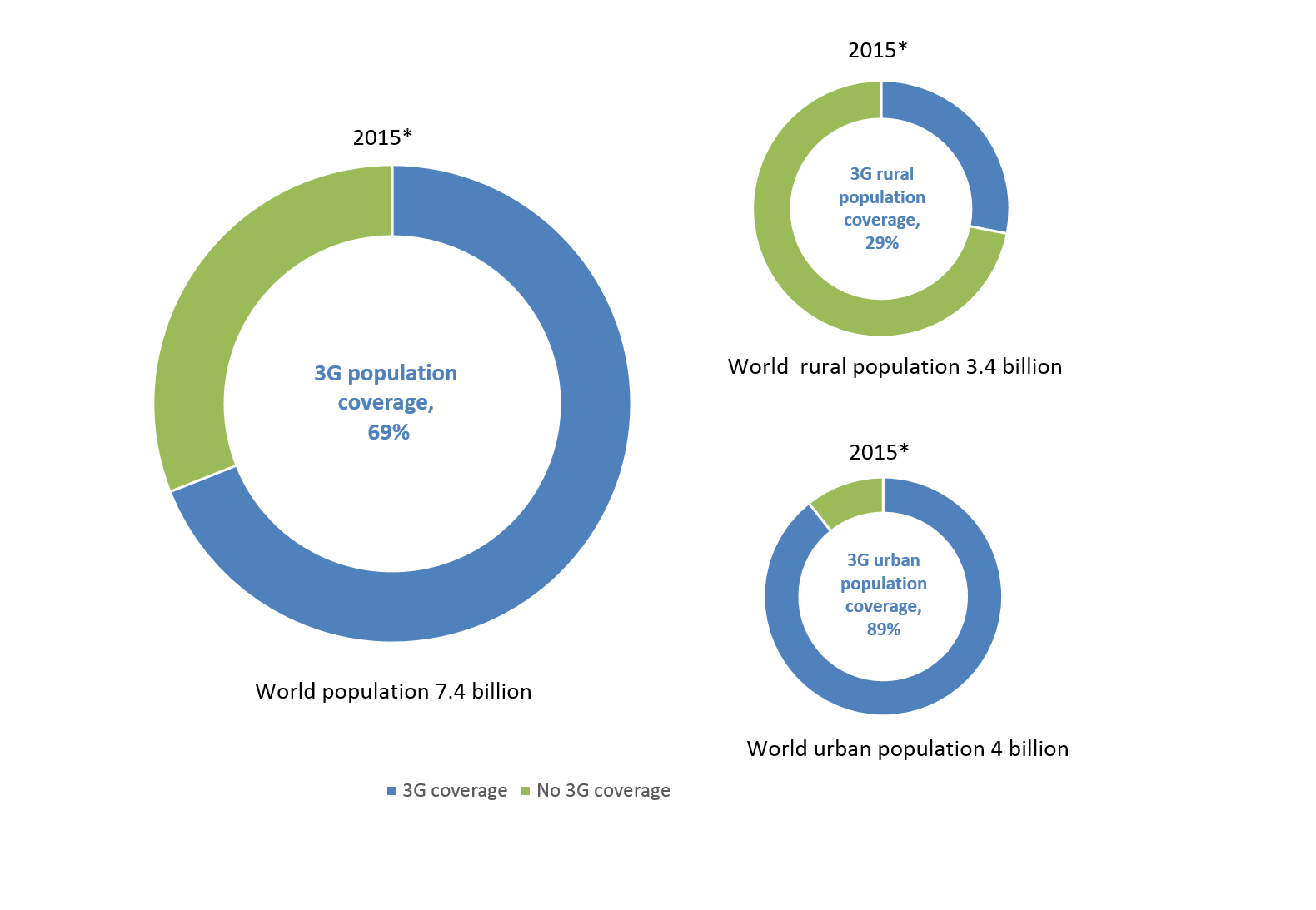
Note: * Estimate
Source: Measuring the Information Society Report, ITU 2015
It is estimated that 3G network coverage grew from 45 per cent of world population in 2011 to 69 per cent in 2015, by which time 3G networks covered 89 per cent of people living in urban areas and 29 per cent of those in rural areas.
Target 2.5.A: Gender equality among Internet users should be reached by 2020
Percentage of individuals using the Internet, by gender, development status and region, 2015*
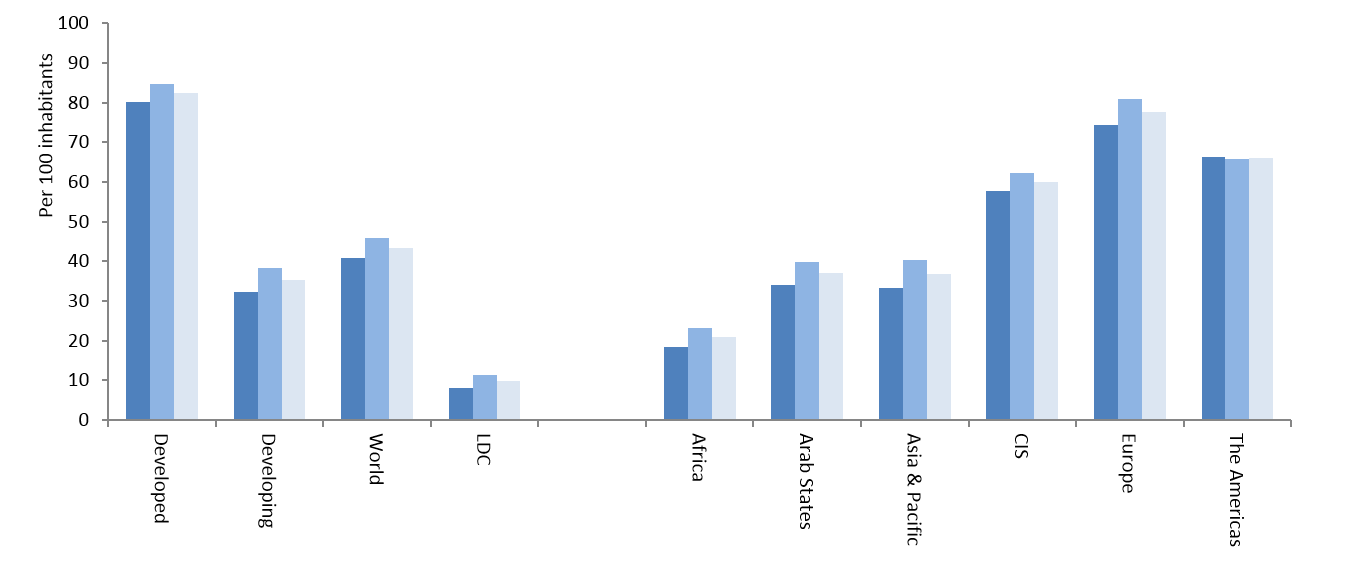

Note: * Estimate
Source: Measuring the Information Society Report, ITU 2015
The gender digital divide was estimated in developed and developing countries in 2013 and 2015. These data, suggest that the Internet user penetration rate has been around 11 per cent lower for females than for males in both years. The gap between the two rates is lowest in developed countries (at 5.4 per cent in 2015), significantly higher in developing countries (15.4 per cent in both years), and highest in LDCs (28.9 per cent in 2015). The data suggest that the gap has narrowed in developed countries between 2013 and 2015, while remaining stable in developing countries and LDCs. Only one region, the Americas, displays an Internet user penetration rate that is higher for females than for males.
Target 2.5.B: Enabling environments ensuring accessible telecommunication/ICT for persons with disabilities should be established in all countries by 2020
For the past seven years, ITU has been working with the Global Initiative for Inclusive ICTs (G3ict) to gather and disseminate information and promote ICT accessibility in line with the UN Convention. In 2014, ITU and G3ict jointly published a Model ICT Accessibility Policy Report, designed to inform public policy on ICTs and disability and including a model institutional framework which builds on the ITU/G3ict online e Accessibility Policy Toolkit for Persons with Disabilities (ITU/G3ict, 2014). The model framework includes guidelines and recommendations in six areas of policy and practice, which will form the basis for assessment of this target.